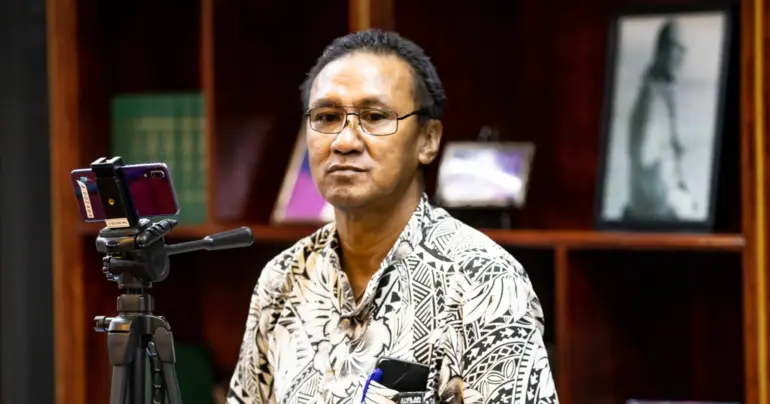Samoans soaked by $10 million transfer fees
 By James Robertson
•
06 December 2019, 9:00AM
By James Robertson
•
06 December 2019, 9:00AM
Technology should be used by Government to lower money transfer costs, a top economist says, as new figures show Samoans are paying up to 70 per cent more than average to send money back home.
World Bank data for the third quarter of 2019 shows Samoans are paying up to NZ$60 to send money from New Zealand - known as “remittances” - or significantly more than other countries. (The third quarter runs from July to the end of September).
Fees on money sent to Samoa from New Zealand averaged for the quarter averaged 9.75 per cent, the Bank showed. (In Australia, the only other market measured by the Bank, fees were just above 8.35 per cent). The global average is 6.84 per cent, according to the World Bank.
The disparity in fees, when applied to the nearly $590 million tala in remittances received by Samoans last financial year, show the financial burden on Samoans is between $8 million to $16 million.
“It has huge implications [for Samoa’s economy],” said Dr. Gazi Hassan, a senior lecturer in economics at the University of Waikato.
“Remittances are like invisible export earnings for the Pacific where the commodity is the migrant labour”.
New figures released by the Central Bank of Samoa have shown remittances are critical to Samoa’s and its recent resurgence to growth of 5.7 per cent after two years of stagnant growth below one per cent.
Remittances increased by nine per cent last quarter, according to figures provided by the Samoan Central Bank in its review of last financial year.
“[There are] underlying concerns about a potential over-dependence on [...] remittances,” Dr. Robert Kirkby, a macroeconomist at Victoria University of Wellington told the Samoa Observer.
The cost of sending NZD$260 to Samoa ranged from NZD$1.77 with the Kilickex service to nearly NZD$60 with the IMEX money transfer service, according to the Bank's research.
The popular remittance service Western Union imposed costs of $28, the study found.
A spokeswoman for the company said:
"Western Union’s pricing varies among the 20,000 pairs of countries and territories (or corridors) in which we operate and varies with the competitiveness and complexity of the marketplace.
"The channels and speeds through which funds are transmitted impact our pricing, as do market dynamics including regulatory requirements and infrastructure."
Australian bank Westpac, which imposed costs of between NZD$37 and NZD$47 for using its bank transfer service, if offering Samoan customers other options which were much more affordable.
Although a bank spokeswoman said it was no longer operating specific services in Samoa, Its prepaid Express Pacific Visa Card has fees of 6.5 per cent, or below the global average cost of financial transfers.
Documents released under freedom-of-information laws in New Zealand have shown the country’s Central Bank and the Ministry of Foreign Affairs and Trade has signed an agreement to lower the cost of sending money to Pacific nations.
A United Nations Sustainable Development Goal is to lower the costs of sending money to the Pacific to just three percent by 2030.
“There are high-level talks between the NZ government (MFAT) and the Reserve Bank of NZ, about lowering the cost of sending remittances,” said Dr. Hassan
“[But[ subsidising or enhancing competition among service providers are a pragmatic approach to the problem but are complicated,
“As a short-run response, I think, a real gain may lie in making utilisation of technology.
“If overseas Samoans could be made more financially inclusive, through increasing financial literacy and technological familiarity with using the internet through mobile devices, then a big chunk of Samoan remittances could be sent at a lower cost.”
Dr. Hassan said the Government of New Zealand could easily run a programme to increase Samoan migrant workers’ tech skills.
Last month, the Governments of Australia and New Zealand announced an increase in the number of Pacific and Samoan workers in bith countries.
About 2400 seasonal Samoan workers are employed in New Zealand, according to Government data. Another 600 are predicted to be employed under a new increase announced last month. Over 800 Samoans are employed on a seasonal basis in Australia, according to its Department of Foreign Affairs.
About 200,000 Samoans live in Australia (55,000) and New Zealand (145,000) according to census data and are a significant source of remittances.
 By James Robertson
•
06 December 2019, 9:00AM
By James Robertson
•
06 December 2019, 9:00AM











